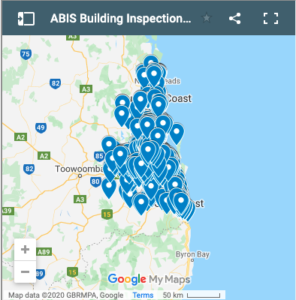Vegetation
The presence of trees and shrubs around buildings may cause cracking and movement of masonry walls. The roots of the vegetation remove moisture from the foundation causing localised settlement. The problem is aggravated by the covering of the surface around the tree with a water shedding banter such as bitumen or concrete. This reduces the natural surface supply of water to the vegetation and forces the roots of the tree or shrub to go deeper and further afield in search of moisture. The reverse situation may occur when long established vegetation near a building is removed. In this latter situation the foundation soil expands as it reabsorbs moisture and localised upheaval is caused. The symptoms usually occur in the form of localised cracking in walls in the vicinity of existing or recently removed trees and shrubs. The cracking is often diagonally stepped and will tend to Corm around openings or other points of weakness in the building. see Figure I (a) and (b). In extreme cases the wall may rotate and twist considerably. The trees most likely to offend are the broad-leafed deciduous trees and the gross feeding Eucalypts. These trees exhibit rapid growth in spring and early summer when they take considerable quantities of water.
Tree roots and building structures
As discussed in the State Forests of New South Wales publication “Tree Roots and Building Structures” (December 1977) as roots grow and thicken into woody tissue, they have to exert considerable pressure on the soil around them to create growing space. These pressures can be of the order of several thousand kilopascals. A building with properly constructed foundations that keep the subsoil dry should run little risk of damage from trees or shrubs subsequently planted nearby – the dry soil will hold little attraction for rout growth. Nonetheless common-sense is needed with such plantings, and the distance from the building should vary with the potential size of the tree and with the vigour of its roots. Only shrubs or small trees with relatively non-troublesome root systems, should be planted within 2 metres of a building. and larger trees should be keep progressively further from the building up to at least 10 metres in the case of the largest species In the case of existing mature trees, roots should be pruned back during excavation, preferably at a minimum of 3 metres from the foundations, ensuring that sufficient roots are left to give the tree continued support. ‘Frees closer to the proposed building than 3 metres should normally be removed. If a tree is to be retained as a feature, it should be properly pruned and adequate allowance made for root function (e.g. beam supported floors over ground cavities)





